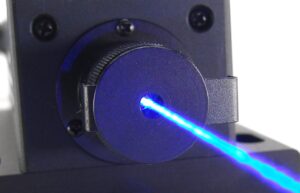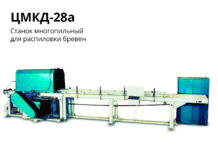Solid-state lasers:
Solid-state lasers take the help of a glass or crystalline rod which is “doped” with ions that help in getting the required energy states. For example, ruby laser was the first fully operational laser, made from ruby (chromium-doped corundum). In the dopant, population inversion is actually maintained. These materials are optically pumped using wavelengths shorter than the lasing wavelength, often from flash tubes or from another laser. The term “solid-state” is very rarely used in laser physics. Laser diodes (semiconductor diodes) are not typically considered solid-state lasers.
Neodymium is one of the examples of common dopant in which various solid-state laser crystals, including yttrium orthovanadate (Nd:YVO4), yttrium lithium fluoride (Nd:YLF) and yttrium aluminium garnet (Nd:YAG). All these lasers are capable enough to produce high powers in the infrared spectrum at 1064 nm. The lasers are sued for the purpose of welding, cutting, and marking metals and other materials. These lasers are also used for pumping dye lasers and in spectroscopy. In general, these lasers 2 times, 3 times, or 4 times the frequency to produce 532 nm (green, visible), 355 nm, and 266 nm (UV) beams. Frequency-double diode-pumped solid-state (DPSS) lasers are used to produce bright green laser pointers. The optical glass windows manufacturers in the market make use of the lens optical and industrial lasers optics.
Types of dopants
Some other common dopants in the solid-state lasers are holmium, erbium, ytterbium, and thulium. The efficiency of the ytterbium crystals is very high and high-powered due to a small quantum defect. In ultrashort pulses, extremely high powers can be achieved with Yb:YAG. Holmium-doped YAG crystals emit at 2097 nm and an efficient laser operates at infrared wavelengths that are strongly absorbed by water-containing tissues. Generally, in the pulsed mode, Ho-YAG is operated and passed through the optical fibers surgical devices to resurface joints, vaporize cancers, remove from teeth, and pulverize kidney and gall stones.
Highly tunable infrared laser is produced by the Titanium-doped sapphire (Ti:sapphire), commonly used for spectroscopy. It is also notable for its use as a mode-locked laser producing ultrashort pulses of extremely high peak power. In the solid-state lasers, the thermal limitations arise from the pump that has not been converted that heats the medium. This heat, when combined with a high thermo-optic coefficient (dn/dt), can cause thermal lensing and reduce quantum efficiency. Diode-pumped thin-disk lasers prevent these types of issues by having a gain medium that is much thinner in comparison to the diameter of the pump beam.















